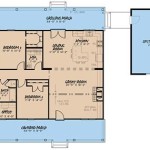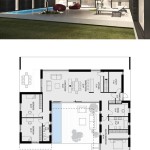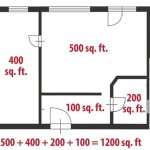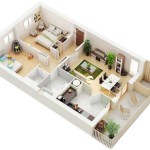Make A House Floor Plan: A Comprehensive Guide
Creating a house floor plan is a fundamental step in designing and constructing a home, whether you are engaging in new construction, renovation, or simply re-imagining an existing space. A well-developed floor plan serves as a blueprint for the entire project, providing a visual representation of the layout, dimensions, and relationships between different rooms and areas within the dwelling. This article offers a thorough guide to the process of making a house floor plan, covering essential considerations and practical steps.
Before embarking on the planning process, it is essential to define the project’s goals and scope. Consider the needs and preferences of the occupants, the desired style of the home, and any specific requirements related to accessibility, energy efficiency, or local building codes. These initial considerations will inform the overall design and layout of the floor plan.
Key Point 1: Understanding Space Requirements and Functionality
Determining the necessary square footage and the functionality of each room is a crucial initial step. Begin by listing all the rooms required in the house, considering factors such as family size, lifestyle, and future needs. Common rooms include living areas, bedrooms, bathrooms, kitchen, dining area, home office, and utility spaces such as laundry rooms and storage. Each room should be evaluated based on its intended use and the number of people who will typically use it.
For example, a living room should be large enough to accommodate seating arrangements, entertainment equipment, and possibly a fireplace or built-in storage. The size of bedrooms should accommodate beds, dressers, and other essential furniture, as well as provide comfortable circulation space. The kitchen should be designed with adequate counter space, storage cabinets, and room for appliances such as a refrigerator, oven, and dishwasher. Consider the work triangle principle, which emphasizes efficient arrangement of the sink, stove, and refrigerator to minimize movement during meal preparation. Bathrooms should have sufficient space for fixtures like the toilet, sink, shower or tub, and storage. The size and layout of bathrooms can be adjusted based on whether they are primary bathrooms, guest bathrooms, or powder rooms.
The relationship between different rooms is also important. Locate bedrooms away from noisy areas such as the living room or kitchen to ensure privacy and quiet. Consider the flow of traffic throughout the house when planning hallways and entryways. Ensure there are direct pathways from the kitchen to the dining area or outdoor spaces for ease of serving meals. Thoughtful consideration of space requirements and functionality can result in a more efficient and enjoyable living environment.
Additionally, plan for potential future needs. If the family is likely to grow, consider including an additional bedroom or flexible space that can be converted into a bedroom or home office. If aging in place is a consideration, plan for accessibility features such as wider doorways, grab bars in bathrooms, and single-story living arrangements. Planning for future needs can prevent costly renovations later on.
Key Point 2: Methods for Creating a Floor Plan
There are several methods for creating a floor plan, each with its own advantages and disadvantages. Traditional methods involve using paper, pencils, rulers, and architectural scales to draw the floor plan by hand. This approach allows for a tactile and creative process, but can be time-consuming and requires drafting skills. Computer-aided design (CAD) software offers a digital alternative, enabling the creation of precise and detailed floor plans with features such as automatic dimensioning, layering, and 3D modeling. Popular CAD software options include AutoCAD, SketchUp, and Revit. While CAD software requires a learning curve, it can significantly streamline the design process and facilitate collaboration with architects and contractors.
Online floor plan tools are another option, offering user-friendly interfaces and pre-designed templates that can be customized to fit specific needs. These tools are often web-based, allowing users to create and share floor plans from any device with an internet connection. Some online floor plan tools also offer features such as virtual tours and furniture placement options. Examples of online floor plan tools include RoomSketcher, Floorplanner, and SmartDraw. For those who prefer a more streamlined approach, mobile apps are available that allow users to create floor plans using their smartphone or tablet. These apps often use augmented reality (AR) technology to measure spaces and create accurate floor plans. Examples of such apps include Magicplan and Measure.
The choice of method depends on the user’s skills, preferences, and budget. Those with experience in drafting or CAD software may prefer these options, while beginners may find online floor plan tools or mobile apps more accessible. Regardless of the method chosen, accuracy is crucial. Ensure that all measurements are precise and that the floor plan is drawn to scale. Double-check all dimensions and layouts before finalizing the design.
When using any method, consider using standard architectural symbols for doors, windows, walls, and fixtures. This makes the floor plan easier to understand for builders and other professionals. Standard symbols ensure that everyone is on the same page and minimize the risk of misinterpretations during the construction process.
Key Point 3: Essential Elements of a Floor Plan
A comprehensive floor plan should include several essential elements to accurately represent the design and layout of the house. First, it should accurately depict the dimensions of each room and the overall footprint of the house. Dimensions should be clearly labeled and drawn to scale, ensuring that builders and contractors can accurately interpret the plan. The thickness and type of walls should also be indicated, whether they are interior walls, exterior walls, or load-bearing walls.
The placement and size of doors and windows are critical elements of the floor plan. Indicate the swing direction of doors to ensure they do not obstruct traffic flow or furniture placement. Windows should be accurately sized and positioned to maximize natural light and ventilation. The location of staircases, including the number of steps and the direction of ascent, should also be clearly indicated. Ensure that staircases comply with local building codes regarding rise and run dimensions.
The floor plan should also include the location of plumbing fixtures such as toilets, sinks, showers, and bathtubs. Indicate the location of water supply lines and drainpipes to facilitate plumbing installation. Electrical outlets, switches, and lighting fixtures should also be shown on the floor plan. Work with an electrician to ensure that the electrical layout meets the needs of each room and complies with electrical codes. Include the location of major appliances such as the refrigerator, oven, dishwasher, washing machine, and dryer. These appliances should be positioned to maximize efficiency and convenience.
In addition to these essential elements, consider including additional details such as the location of built-in storage, fireplaces, and other architectural features. The more detailed the floor plan, the easier it will be for builders and contractors to implement the design accurately. Consider the orientation of the house on the site, indicating which direction is north. This will help determine the optimal placement of windows and rooms to maximize sunlight and natural ventilation. Indicate the location of exterior features such as porches, patios, decks, and driveways. These features should be integrated seamlessly with the interior layout of the house.
Finally, ensure that the floor plan includes a title block with essential information such as the project name, address, scale, date, and the name of the designer or architect. This information provides context and facilitates communication among all parties involved in the project.
Once the initial floor plan is drafted, it's important to review and refine it. This involves assessing the layout for functionality, traffic flow, and overall aesthetics. Consider walking through the plan virtually to simulate the experience of living in the house. Adjust the layout as needed to address any shortcomings or areas for improvement.
Share the floor plan with other stakeholders such as family members, contractors, and architects for feedback. Incorporate their suggestions and make any necessary revisions. Multiple iterations may be required to finalize the floor plan and ensure that it meets everyone's needs and expectations. Be open to making changes and refinements based on feedback from others. This collaborative process can lead to a better and more functional floor plan.
Cost considerations should be continually evaluated throughout the floor plan design process. The size and complexity of the house, as well as the materials and finishes used, will significantly impact the overall cost. Work with a builder or contractor to develop a preliminary budget and make design choices that are consistent with available resources. Consider value engineering, which involves identifying opportunities to reduce costs without compromising the quality or functionality of the design. For example, using standard-sized windows and doors can be more cost-effective than custom sizes.
Building codes and zoning regulations must be strictly adhered to throughout the floor plan design process. These regulations govern aspects such as building height, setbacks, lot coverage, and fire safety. Work with a local building official or architect to ensure that the floor plan complies with all applicable codes and regulations. Failure to comply with these regulations can result in costly delays and revisions.
Energy efficiency should be a key consideration in the floor plan design. Orient the house to take advantage of natural sunlight for heating and lighting. Use energy-efficient windows, insulation, and HVAC systems to minimize energy consumption. Consider incorporating passive solar design principles, such as overhangs to shade windows during the summer months. These measures can reduce energy costs and improve the comfort of the home.
Accessibility is another important factor to consider, especially for those who may have mobility limitations. Design the floor plan with wider doorways, hallways, and bathrooms to accommodate wheelchairs or walkers. Install grab bars in bathrooms and consider a zero-entry shower. These features can make the home more accessible for people of all ages and abilities.
Creating a well-designed floor plan is a complex but rewarding process. By carefully considering space requirements, choosing the right design method, and including essential elements, it is possible to create a functional and aesthetically pleasing home that meets the needs of its occupants. Remember to review, refine, and iterate on the design based on feedback from others and considerations such as cost, building codes, energy efficiency, and accessibility. A well-developed floor plan is a cornerstone of a successful construction or renovation project.

House Plans How To Design Your Home Plan

House Plans How To Design Your Home Plan

House Plans How To Design Your Home Plan

House Plans How To Design Your Home Plan

House Plans How To Design Your Home Plan

Floor Plan Creator And Designer Free Easy App

Make Your Own Blueprint How To Draw Floor Plans Drawing House Sketch Plan

Floor Plan Creator And Designer Free Easy App

Small House Plans Popular Designs Layouts

Where You Can Buy House Plans Live Home 3d
Related Posts








